Belarus Tour Guide: Ideas for Your Trip!
Things to see in Braslav: ‘Mosaic’ church, lakes, architecture hailing from the Tatra Mountains and beach festivals
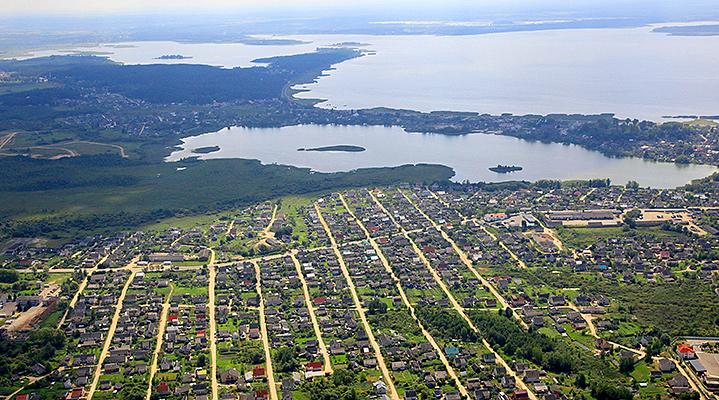
The town of Braslav, the center of the Belarusian Lake District, is located on a narrow strip of land between the lakes of Drivyaty and Novyaty. It was first mentioned in chronicles in 1065. The Chronicles of Bykhovets mentioned it as Braslavl, the Chronicle of Maciej Stryjkowski as Braslaw.
There are several ideas how the town got its name. According to the most popular one, Braslav owes its name to Rogneda of Polotsk's grandson Bryachislav of Polotsk who founded the town. It is backed up by another version of the name - Bryachislavl. Another interpretation is more mundane. According to it, the word Braslav has a Baltic root ‘brasla’ which translates as shallow of the river in English. The town grew out of an ancient Latgal and Krivichi settlement. The archaeological dig has confirmed that Braslav existed as early as the 10th century.
In the time of the Principality of Polotsk it was a frontier town. At the beginning of the 14th century, Braslav made part of the Grand Duchy of Lithuania. On 8 October 1500, Prince Alexander Jagiellon granted it Magdeburg rights, 14 years later Prince Sigismund I confirmed it with his privilege. The town was repeatedly destroyed during frequent wars. But each time it would rise from the ruins. Now Braslav is a cozy resort place that attracts visitors not only by rich history, beautiful landscapes but also by an interesting festival life.
Braslav Lakes National Park
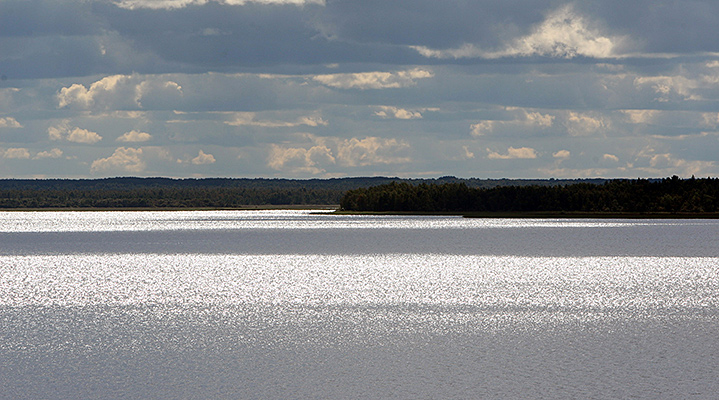
The main asset of Braslav is, of course, nature. The town nestles amid beautiful glacial lakes, which are many thousands of years old. The historical center is located on the isthmus of the lakes of Drivyaty and Novyaty, with streets spreading further from there. Today the town is literally belted by a blue necklace of lakes.

Braslav is home to the administrative center of the Braslav Lakes National Park, which embraces more than 70 lakes. The largest of them are Drivyaty, Nespish, Nedrovo, Voyso, Strusto, Northern Voloso, Southern Voloso, etc. This network of lakes is linked by the Druika River flowing out from Drivyaty Lake. Today, the park offers visitors fascinating tourist routes, fishing tours, places for secluded escape. You can start getting familiar with the region and the town from the popular recreation center Drivyaty which stands on the peninsula of the same name lake. In the warm season, you can take a boat ride and enjoy the unique Braslav lakes landscapes.
Drivyaty Lake waterfront and beach
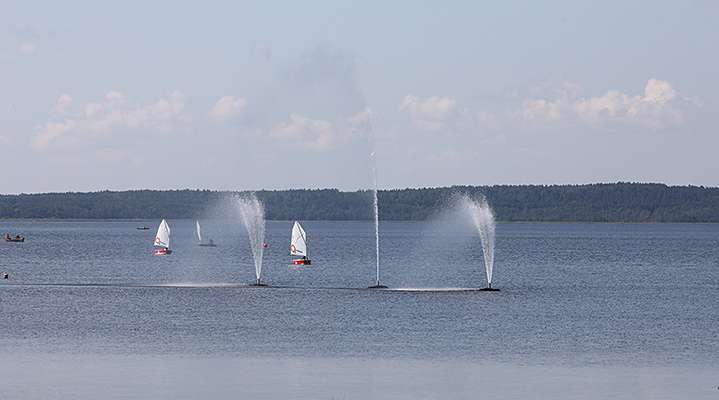
The center of attraction is the Lake Drivyaty waterfront and beach. In recent years, this place has become even more convenient and attractive partly owing to the Viva Braslav festival, dubbed as Belarusian Ibiza. Water surface and stunning sunsets are the best scenery for a large-scale musical open air.
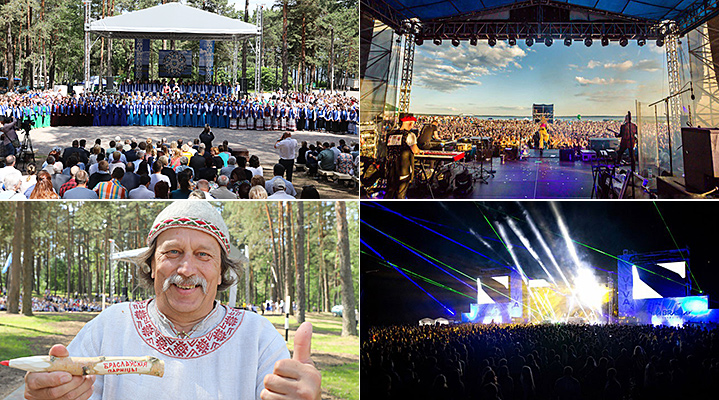
The waterfront features pedestrian and bicycle paths, a skate park, benches and romantic lanterns, modern sculptures of local artisans - a goldfish and a pair of cranes. Here you can also see a commemorative sign to another signature event of the town – the Braslav International Festival of Traditional Culture. The Arc of Wish Fulfillment was mounted on the waterfront, at the beginning of the most ancient stone-paved street of Braslav formerly known as Grand Street. You can walk under it and see whether your wishes really come true.
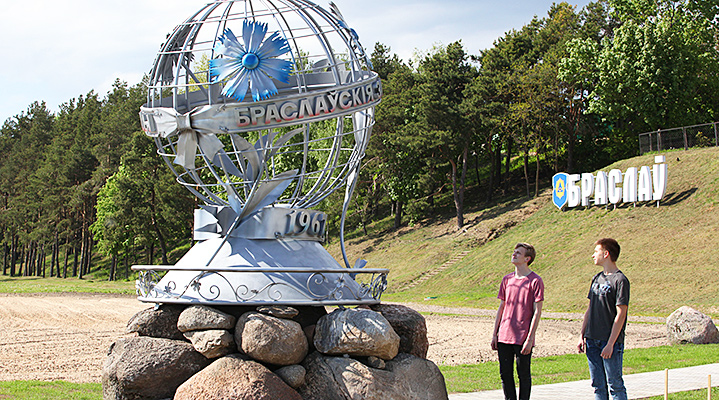
Visitors entering the town are welcomed by the BRASLAV sign made of huge letters in the Hollywood style. Unveiled in 2014, this sign is seen from afar; it stands on a hill opposite the coastline and the Postavy-Braslav road. The sign stretches 15 meters in length, each letter is two meters high, and the famous Belarusian ‘Ў’ letter rises another 30 cm. Now it is one of the most popular places to make photos in Braslav.
Where: Gagarina Street
Castle Hill
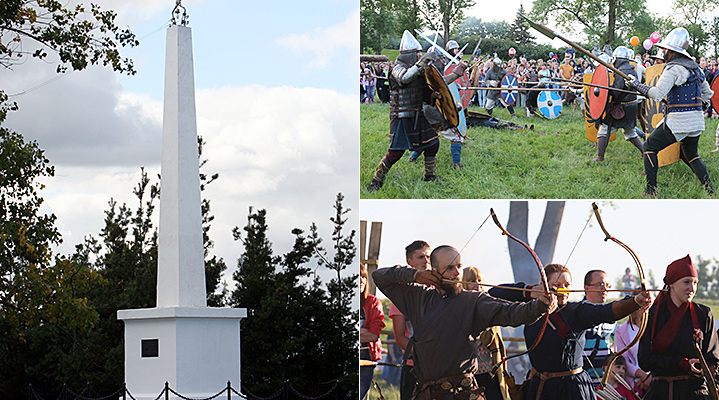
The town used to be a frontier outpost, therefore it had fortifications. A 14-meter high hillfort was located on the isthmus between Drivyaty Lake and Novyaty Lake in the heart of Braslav. There was a wooden castle surrounded by ramparts. The fortress had seven towers, one of them - an exit one - had double iron gates and loopholes.
During the times of the Grand Duchy of Lithuania, the Braslav outpost controlled the routes to Vilno. In the Middle Ages, the castle housed local authorities, courts and an archive. After the establishment of the Polish–Lithuanian Commonwealth, the fortress lost its military importance and fell into decay, while local residents settled around the castle.
The Castle Hill is an iconic place for locals and a ‘must see’ location for tourists. This is the best place to get a stunning view of Braslav and the surrounding lakes from above. On top of the hill there is a granite boulder with a bronze plaque telling about the origins of the town. Dr. Stanislav Narbut, the pride of local residents, was buried here. Since 2011, the Sword of Brachislav medieval culture festival has been held in the historical center of Braslav.
From the Castle Hill you can reach the main temples of the town - the Catholic Church of the Nativity of the Blessed Virgin Mary and the Church of the Assumption of the Blessed Virgin Mary.
Church of the Nativity of the Blessed Virgin Mary - the sanctuary of the Queen of Lakes
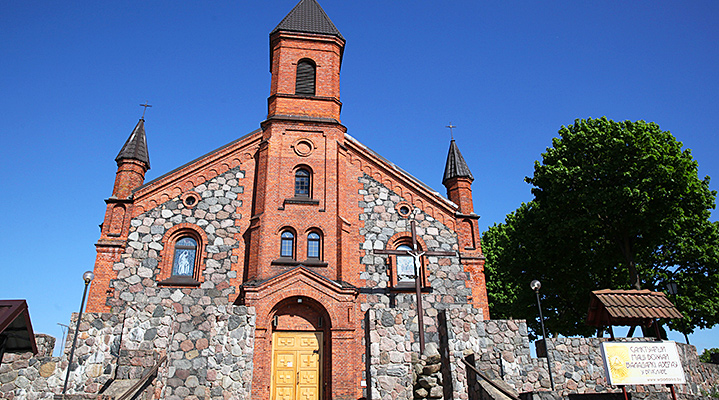
The Catholic church was built at the foot of the Castle Hill in 1824. In 1897 it was expanded and rebuilt in the neo-Romanesque style. The church was built of rubble stone and unplastered bricks, it had a gable roof crowned by a hip-roof bell tower. The church is known for its unusual stone laying technique that reminds of a mosaic.
The Catholic parish in Braslav was first mentioned in the 15th century. Initially, the church was a wooden structure, and was destroyed by fire several times. After the suppression of the 1794 uprising led by Tadeusz Kosciuszko, Russian troops burned down the church once again. Thirty years later, a stone church was erected in its place. The parish of the church kept growing and by the end of the century, the church could not accommodate all believers, therefore a decision was made to expand it. The work was completed in 1897, the temple was consecrated in honor of the Nativity of the Virgin Mary.
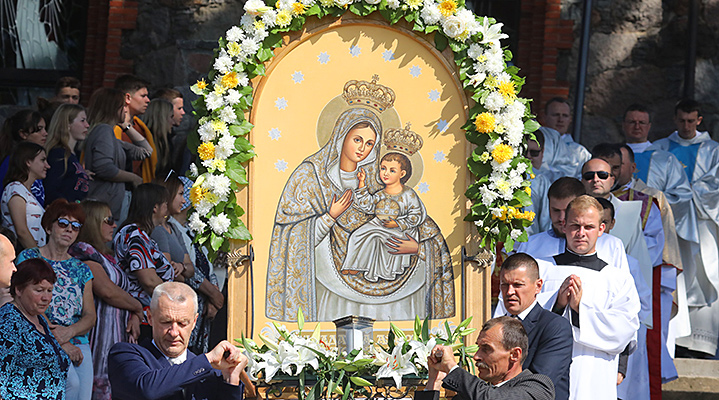
The church is known for the revered miracle-working icon of the Mother of God of Braslav, which became famous several centuries ago and received the beautiful name The Queen of Lakes. In the early 16th century an orthodox monastery was founded in Braslav. Later it moved to one of the 15 islands of Nespish Lake. In 1596 the monastery became Uniate, and in 1744 it was included in the list of monasteries with wonder-working icons. Already at that time the Madonna of the Island was well-known far beyond Braslav, and many believers gathered on the shore to see it when on certain days the relic was taken out of the temple. In August 1832 a lightning caused a big fire in the monastery and all the constructions were destroyed. Only the icon survived! The next day the icon - badly damaged - was found on a nearby island.
At that time the construction of a new church was just about to be completed in the town, and it was decided to move the icon there. The legend, however, says that the icon did not immediately “settle down” in the temple: several times it mysteriously returned to the island. There is no written evidence of the miracles the icon performed, but locals revere The Queen of Lakes as a great relic. Many thank it for the fact that during the years of the Soviet Union, the Braslav church practically never closed, and religious life in the town did not stop.
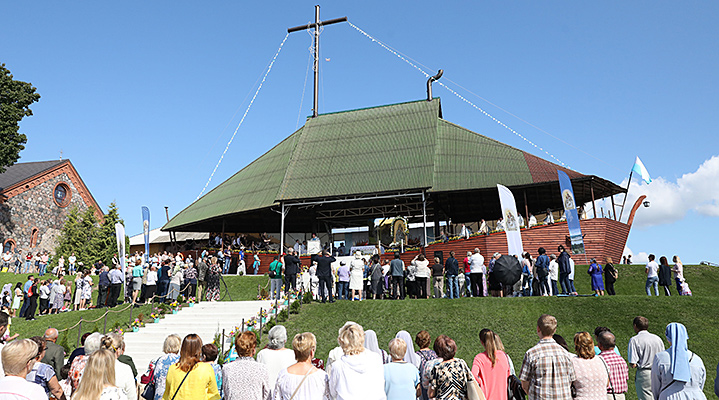
The icon of the Mother of God of Braslav, The Queen of Lakes, was crowned in August 2009. It became the seventh Vatican-marked shrine in Belarus and the first one in Vitebsk Oblast. In honor of this event, a boat-shaped stage with a wide stone stairway was built near the church. During the holy liturgy, Archbishop Cardinal Joachim Meisner of Cologne placed the papal crowns blessed by Benedict XVI on the images of Jesus and Our Lady. The celebration was attended by 31 hierarchs, about 200 clergymen and almost 10,000 worshipers. The church was given the title of a sanctuary in 2000. Every year thousands of worshipers flock to Braslav to celebrate the feast of the wonder-working icon. The icon is kept in the altar of the church and is revealed only during services.
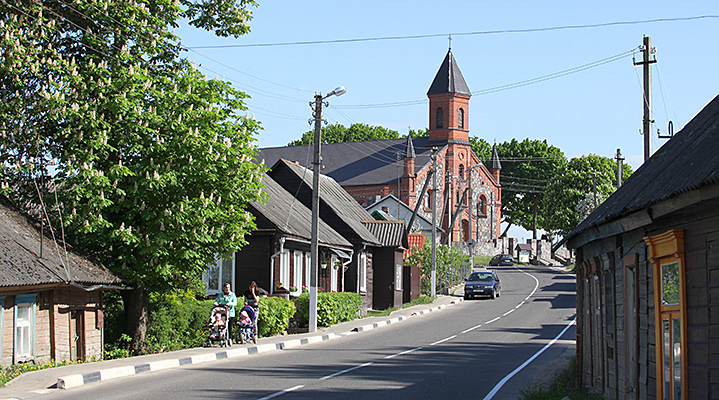
Where: 1 Sovetskaya Street
Church of the Assumption of the Blessed Virgin Mary
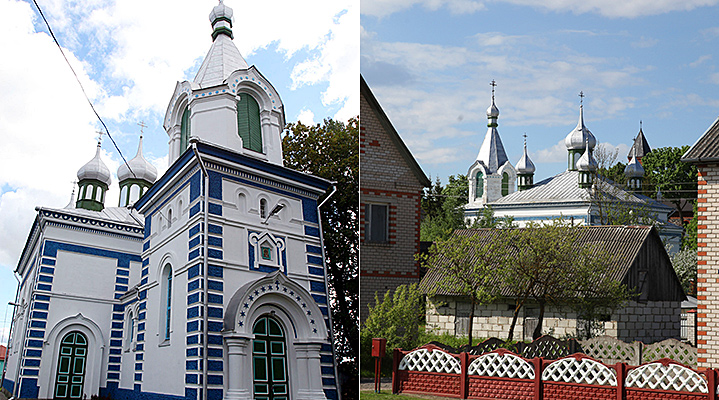
The Orthodox Church of Braslav, which dates back to the 15th century, is located across the street from the Catholic parish. The Russian Revival-style stone church was built in 1897 to replace the St. Nicholas wooden church. The latter was first moved to the cemetery and then dismantled in the middle of the 20th century. At this time, the place between the two churches was the central square of the town.
The church has a cubic form in its foundation and a four-slope roof decorated with five domes, a five-sided apse, and two-tiered bell tower. In the apse there is a wooden three-tier iconostasis, which was allegedly made for the Braslav church by one of the Kiev workshops. The church is proud of its unique icons of the 18th-19th centuries, including those of Saint Nicholas, Apostles, Annunciation, Purification, Adoration of the Magi, Archangel Michael, Mother of God with the Child and Jesus the Pantocrator. Most of them have been brought from the townlet of Druya.
Where: 70 Leninskaya Street
Narbut Hospital – St. Panteleimon Convent
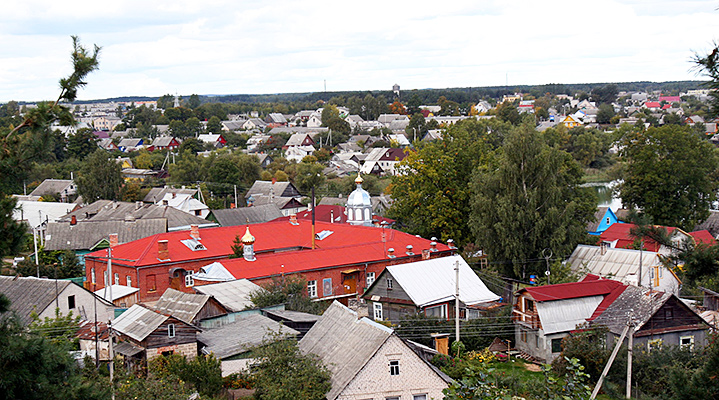
On the other side of the Castle Hill, there is an eye-catching one-story red brick building. At present, it belongs to the St. Panteleimon Convent, but in the past it was home to Braslav District Hospital before it moved into a new building in 1994. The hospital was set up by Doctor of Medicine Stanislav Narbut in the early 20th century.
Stanislav Narbut came from a noble family. After graduating from the university in Munich, he came to Braslav at the invitation of Earl Plater and opened a private practice there. In order to become a doctor, one should obtain a diploma in the Russian Empire, so Stanislav Narbut entered the University of Dorpat (currently the University of Tartu), from which he graduated in 1891.
After receiving a permit to work as a doctor, Stanislav Narbut spearheaded the effort to start the construction of a cutting-edge hospital. On 24 November 1906, a modern community hospital with its own water supply system opened in Braslav, with Stanislav Narbut as its chief physician. He performed surgeries, treated patients with various infections, and tried to reduce the high child mortality rate.
Apart from running the hospital, Stanislav Narbut headed a fire-fighting society, acted in a local theater, staged theater productions, and helped at an insurance office. The doctor always tried to help everyone he could, for example, giving money for medicines to the poor or to patients who could not afford treatment at the hospital. When World War I broke out, he enlisted in the army, where he headed a military hospital on the Northwestern Front. Stanislav Narbut had to suspend his professional activities due to an injury. He was able to return to work only in 1919.
Stanislav Narbut, who was called ‘our doctor’ in Braslav, died from pneumonia in 1926. He got sick after falling through ice on his way to a patient. Locals buried Stanislav Narbut on the Castle Hill and installed a monument – a massive cube with a four-faceted ten-meter-high stele crowned with a lantern – above the grave. The monument is meant to look like a lighthouse, symbolizing the doctor’s deep desire to help others.
In 2006, a skete of St. Panteleimon was set up in Braslav as a branch of St. Euphrosyne Convent in Polotsk. Thanks to efforts of its nuns, a year after the skete was turned into the St. Panteleimon Convent. The building of the former hospital was renovated and refurbished for the convent. The facility features the Church of St. Panteleimon, nun’s rooms, refectories for nuns and guests of the convent, a kitchen, a priest’s room, and a hotel for pilgrims. The convent keeps several relics, including the reconstructed Icon of the Mother of God of Kazan, a copy of the wonderworking Icon of the Mother of God of Vladimir, the wonderworking Icon of Saint Nicholas, and icons of the patrons of the convent in Braslav: St. Panteleimon and St. Euphrosyne of Polotsk with pieces of their relics.
Where: 38 Sovetskaya Street
Zakopane-style houses
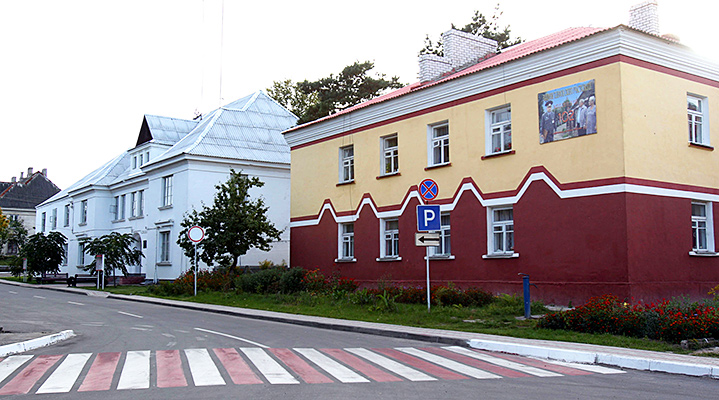
After the Treaty of Riga of 1921 Braslav and a number of other cities and towns in Western Belarus became part of Poland. Architect Juliusz Klos, who was also a professor at Vilna University, came to rebuild the streets. A government colony (a quarter for civil servants) was erected in the center of Braslav under his supervision. It comprised 18 buildings: a court house, houses of the mayor, employees of the municipal administration and officers, a sports house and an engineer house, and outbuildings.
The colony was built on a hill overlooking Drivyaty Lake using a style native to the Polish town of Zakopane aka Zakopane style. Harmony with nature and the incorporation of buildings into the surrounding area are some of the style’s key principles. Distinguishing traits of the style also include high wood shingle roofs, dormer windows with patterns of divergent beams, alternating windows of different sizes, multiple chimneys, and partially plastered walls.
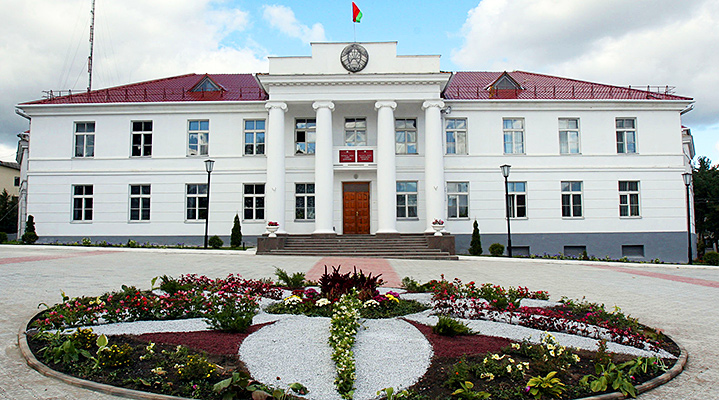
Most of the buildings still stand. Truth be told, the look of some of them has changed: they have been repainted, covered with new materials, additional buildings were erected to expand existing ones, and wood shingle roofs were replaced with tiles. The former mayor’s office now houses the Braslav District Executive Committee (119 Sovetskaya Street). A roofed well located in the backyard of the community center (106 Sovetskaya Street) was also built in the Zakopane style.
Local lore and history museum
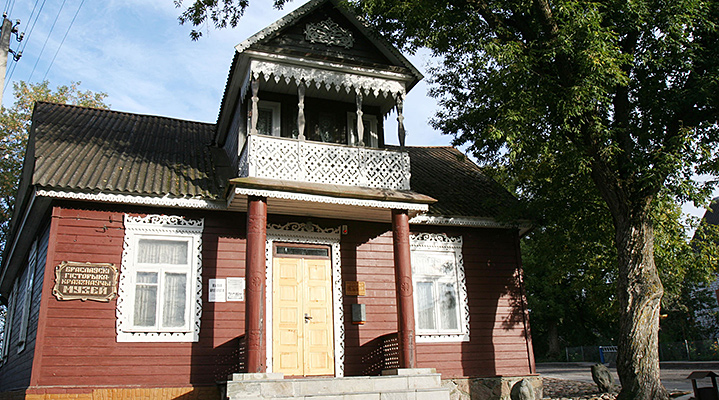
The local lore and history museum introduces visitors to the rich past of Braslav. The museum is located in an old manor. Six halls of the museum are filled with surprising items, which are rare not only to Belarus but also to lands of Eastern Slavs as a whole. The items on display include an Ancient Egypt ushabti figurine, women’s adornments found in a burial mound near Uklya Lake and dating back to the 11th century, metal styluses used by Braslav residents and a spindle whorl with Cyrillic signs dating back to the 11th century, a silver treasure trove from the village of Slobodka, unique artifacts from the site of the ancient town of Maskovichi – animal bones with drawings and runic inscriptions…
The museum’s collection narrates about Magdeburg sites in the land of Braslav, the insurrections of 1794, 1830, and 1863-1864, and multiple events that happened during World War I… One hall is dedicated to the Great Patriotic War of 1941-1945. A collection of works by prominent Belarusian painter Piotr Sergiyevich is also kept in the museum.
Where: 39 Engelsa Street
Traditional culture museum
The traditional culture museum occupies an old mill, which was erected in the early 20th century on the shore of Drivyaty Lake. The museum stemmed from the Braslav house of arts and crafts founded in 1991. The exposition focuses on local decorative and applied arts, crafts, and the daily life of Braslav residents in the distant past.
The collection includes several main divisions: ancient wickerwork traditions, woodcarving traditions, and a weaving shop. In the local pottery visitors can learn about the history of this craft in Braslav lands, take a look at the ceramic items, which were made in Belarus’ north in the past. Visitors can also participate in pottery lessons, work with the potter’s wheel, and bake pottery goods.
The halls are used to arrange exhibitions of folk crafts, works by painters, decorative and applied arts. The museum’s souvenir shop offers something to remember the place by.
Where: 7 Gagarina Street


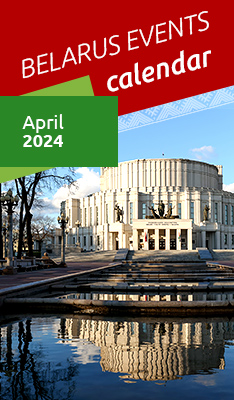




 send friend
send friend print version
print version make home page
make home page add to bookmarks
add to bookmarks
